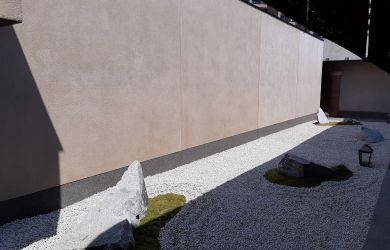
May 7, 2009
War Story
Gregory Hadley's Field of Spears recounts a dramatic—and little-known—episode from the closing days of World War II. Yet as the author discovered, the story didn’t finish with the war's end
By Metropolis
Originally published on metropolis.co.jp on May 2009

Captain Jordan, front row, far right
A little over a year ago, English professor Gregory Hadley received a letter from the daughter of a B-29 bomber captain. In the closing weeks of WWII, her father’s plane had been shot down 10km southeast of Niigata. Hadley, who teaches at Niigata University of International and Information Studies, had been trying to track down the man’s family for several years.
The captain’s fate was a key element in Field of Spears, Hadley’s vivid chronicle of an obscure, though dramatic, wartime incident. Excerpted in Japan’s popular Sekai magazine and reviewed in journals in Japan, Britain, and the US, the book has been gathering attention both here and abroad.
Now that Hadley received his letter, just one thought troubled him: had he got the man’s character right?
On July 20, 1945, Captain Gordon Jordan’s B-29 was the lead bomber in a five-plane raid to drop anti-shipping mines into Niigata harbor. The port had been targeted by the US Air Force 6th Bomber Group because it connected Japan with its colonies in Korea and Manchuria. At that point in the war, it was one of the Axis power’s few remaining supply lines.
Hadley’s book describes the captain—known as “Porky” to his men—as a plump, hard-drinking Southerner with a Clark Gable moustache. Easily the most flamboyant of the B-29 crew, Jordan was also a superb pilot. But he put his men’s safety first and was elated to be given that night’s mission. It was supposed to be a “milk run” over a poorly defended Japanese city, one that would have left the crew with just three more missions to fly before they could return to the US.
The B-29 had orders to detour out to sea on its long way back to the base on Tinian Island in the northern Marianas. But the weary bomber crew took a shortcut across the city and was hit by a crack anti-aircraft unit that had been recently relocated from Tokyo. Theirs was the only plane ever shot down in Niigata. The B-29 passed into local mythology—along with the claim that all the crew had been killed in the crash.
In fact, as Hadley discovered, only the co-pilot went down with the plane. Jordan and nine of his crew parachuted into the rice fields near two villages. This was the “field of spears” of the title: villagers throughout Japan had been trained to use sharpened bamboo pikes to repel an anticipated American invasion. The local residents arrived at the crash site armed with these weapons, and far more deadly farming tools.
Only weeks before Captain Jordan’s raid, B-29s had hit Niigata with mines, sinking a harbor ferry and drowning a number of schoolchildren. Air attacks against Japanese cities had been accelerating all that year—a few months previously, hundreds of aircraft firebombed Tokyo, killing some 100,000 people. Hated and feared, American airmen had become known across Japan as kichiku bei-ei, or “demonic beasts.”
The stage was set for a horrifying encounter.







